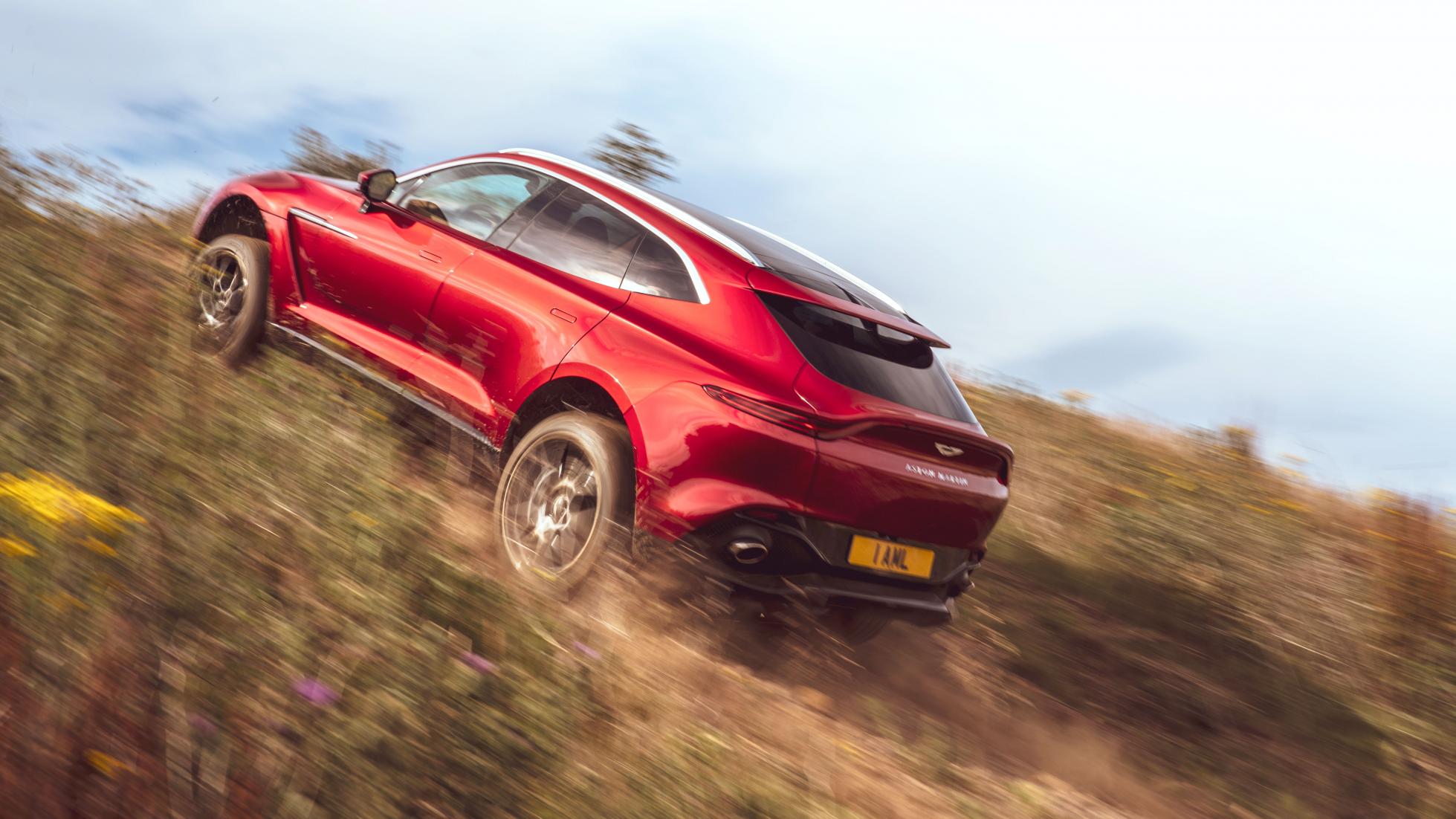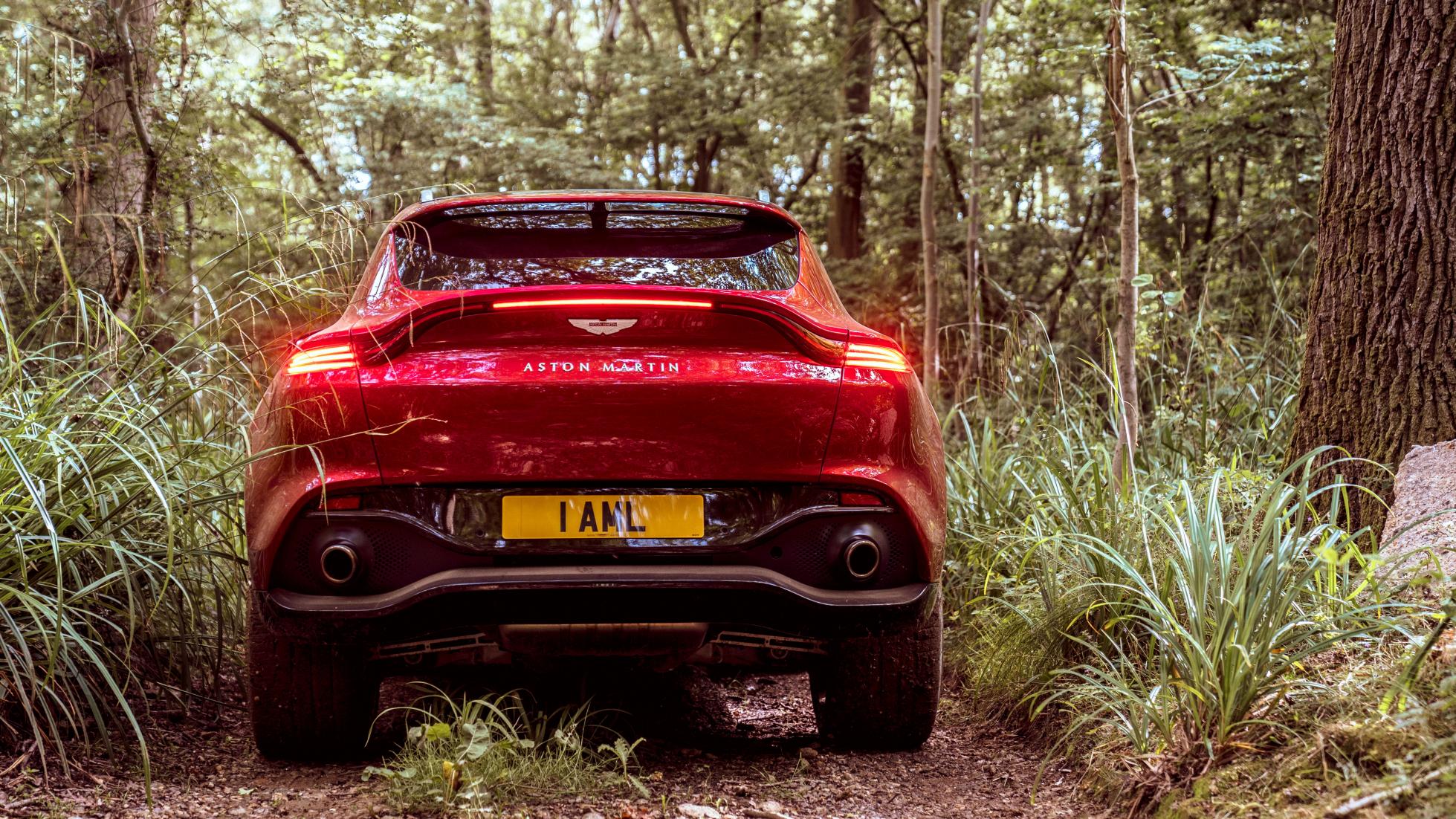The Top Gear car review: Aston Martin DBX





Overview
What is it?
The DBX is Aston’s first SUV in its 100-plus years of history - an attempt to wedge open the tall-car-centric doors of global markets like China, the Middle East and the USA - places deeply attached to the idea of Big Vehicle Status.
It’s also a stab at making a useable, practical, everyday Aston past the four-door Rapide AMRs still lurking at the factory.
There’s a brand-new production facility at St. Athan in Wales, variants in the pipeline and a lot riding on the DBX’s success…
At the moment, there’s just one engine option for the five-seat, four-wheel drive DBX - and that’s a Mercedes-sourced 4.0-litre biturbo V8 with 550hp and 700Nm.
Yep, it’s the same motor that does duty in various AMG models, as well as the current Vantage and DB11, and there’s nothing wrong with it at all - although it’s worth noting that the DBX was originally touted as a pure electric offering.
A powertrain option that now gets dropped down the list of production priorities, although more versions are definitely in the pipeline.
Still, there’s a similarly Merc-made 9spd autobox, triple-chamber air-ride, a suite of electronically-controlled differentials, electric ride control and a host of other up-to-date tech that means this unique-looking Aston can cope with everything life throws at it - be that mud or racetrack kerbs. Or possibly a little of both.
Layered over the hardware is a striking bit of design work by AM’s design overlord Marek Reichman, featuring elements you don’t usually see in the toolkit of blocky SUV design tropes, and the DBX the better for it.
There’s a long bonnet that butts up against a generously-raked ‘screen, a low roofline and a pinched ducktail at the rear that apes the Vantage.
There’s muscle and tone in the side profile, a long wheelbase and plenty of detail - though it has to be said it looks better in the metal than it does in pictures and that it does have some more awkward angles if you spend some time wandering around the car. It’s not boring though - and there’s a lot to be said for that.



Driving
What is it like on the road?
Usefully, the DBX has six drive modes (GT, Sport, Sport+, Individual, Terrain and Terrain+), so the air suspension system has a decent chance of dealing with whatever you throw at it.
On A-roads and motorways its a companionable - if not entirely fuss-free - cruiser, never quite aping a magic carpet thanks to a slight undercurrent of big-wheeled thump to the ride. And yes, the wheels are massive 22s, which don’t actually look too big.
Saying that, it reveals overtaking opportunities unavailable to more mortal vehicles, and the noise is nicely judged - a muted grumble in the more socially-acceptable ranges, a bassy bellow with a hard-edged buzz when you reach for the faster arcs of the rev-counter and the exhaust valves.
The way the Merc-sourced 4.0-litre makes torque and power has been modified to better suit the X’s characteristics, and it’s pretty much spot-on.
Similarly, when surfing around, the 9spd auto seems to manage perfectly well. You don’t really notice it, and that’s a compliment.
Given the opportunity to push (and drop the ride height a little for schporty reactions), it reveals a generally very safe balance with leanings towards rear-wheel drive responses, a tidy, not-very-SUV set of dynamic traits. Basically it’s pitched somewhere between a full fat fast SUV and an actual AM GT car.
Some of that is the fact that it’s quite low - at 1,680mm, it’s some 60mm lower than, say, a Bentley Bentayga - but there’s a keenness that’s surprising. It’s also marginally less satisfying on the track.
Now, circuits are not where SUVs of any stripe feel comfortable or even rational, but the DBX really can lay claim to being a properly sporting thing.
It’s not slick with speed, mind. It doesn’t feel like it slices through the air like a supercar, more a battering ram of performance with less barn-door aesthetic than the usual fast SUV. But it roars and bellows in all the right ways, making it feel properly rapid.
The ‘box isn’t the happiest going full-bore either, despite the paddleshifters behind the wheel. Its responsive enough on upchanges, but really doesn’t want to hammer a gear unless it’s down in the comfortable end of the rev-range.
In its most extreme mode, there’s a defined sharpening of the responses, and the active centre transfer case can vary drive from 47/53 front-to rear to 100 per cent rear-wheel drive, with the electronic diff in the back then pushing torque from side to side between the rear wheels on demand.
There’s also brake-actuated torque vectoring, and a 48-volt electronic anti-roll control (eARC) system replacing traditional anti-roll bars. Now this could make the DBX feel a bit stilted and digital, but it doesn’t.
There’s a little lean, a little oversteer, and a feeling that whomever set the car up arranged it so that it felt like a real GT car - albeit one that’s levitating a foot away from where it should be.
But, and this is an interesting one, when in one of Aston Martin’s more traditional products you disable the traction control and have at it, you get lots of oversteer. You also get reliable amounts of it, all the time.
The DBX, on the other hand, has a tendency to second guess you, and tidy up your worst excesses even with the minders switched ‘off’.
That’s safe. That’s rational. But it’s not the usual Aston way. What it means is that while the DBX can dance, it doesn’t necessarily mean that it flows as well as a rear-wheel drive Aston product.
Not a huge surprise, and it’s not a disappointment as such, but you’ll find the DBX more satisfying on an actual road - albeit at less warp factor.
It’s also more capable off-road than you might imagine given that wheel and tyre combo. Yes, the car is on all-season tyres and no, it’s not a hardcore off-roader, but dropped into Terrain+ mode, which raises the suspension 45mm from standard ride height, tweaks the various differentials and throttle maps and generally sets the cars up for lumpy country, it really can potter across some properly muddy geography.
It’ll wade to half a metre - there are breather pipes on the diffs - manage hillocks and rock scrambles and generally mountain goat itself about.
No, most owners won’t do it, but like most expensive and pointless things, it’s nice to have the element in reserve.
After all, not many supercar owners test their 320km/h capability, but that’s not to say that they don’t like the bragging rights.



On the inside
Layout, finish and space
As you might expect, there’s a herd’s-worth of cow in most DBXs, and it’s all very buttery and fragrant, with an initial palette of 35 colour and material choices along with two brightware finishes to slather everywhere.
If that’s not enough, then you can always go full bespoke and order through AM’s ‘Q’ Department to get that peppermint green-over-tan that you’ve always wanted, though you’d probably end up with the taste police chasing you with a pool ball in a sock.
Still, the front seats are particularly pretty, and the rest of the interior is well-suited to four people, with an occasional seat for five.
General leg and headroom is very good - something to do with that generous wheelbase - and although the doors are physically short, they open wide, which means the DBX is surprisingly accommodating and useful in tight parking spots, despite its overall width.
There’s a 623-litre boot (big enough for most uses), and proper full-split configurations for the rear seats, as well as another 62-litre cubby under the boot floor, meaning that you can do a passable impersonation of a luxurious removals van if you have to.
Up front you get a 12.3-inch screen for the instrument cluster, allied to a 10.25-inch multimedia screen in the centre console with techy bits derived from - you guessed it - Mercedes.
It’s all very nice, but the centre rectangular screen sits behind a more organic shape of trim, and it looks a little misplaced. On early cars the response times were also woeful - there is no touchscreen - making the whole thing feel more than a little clunky.
One thing that’s actually very useful is the storage area under the central tunnel - a bit of a boon when you want to chuck a small bag somewhere.
But generally it’s a car with decent vision, plenty of toys (even the ‘base’ stereo system is an 800-watt Samsung/Harman with 14-speakers), and a luxo-barge feel.




Owning
Running costs and reliability
The DBX is pitched very much as a daily, and that point is no better made than the eleven - count ’em - eleven optional lifestyle accessory packs.
From ‘Snow Packs’ with tyre chains, ski-racks and a boot warmer, to the ‘Touring Pack’ (pretty fitted luggage, a safe under the front passenger seat and a first aid kit), to the ‘Pet Pack’ (dog bed, dirty paw shower unit, sill protector and dog guard - as well as other stuff) - it’s pretty much got you covered.
There are bike racks, an optional tow-bar, a gun safe, picnic kits (the ‘Event Pack’), a ‘Sanctuary’ pack that has a battery conditioner and car cover - pretty much anything that you need to up your bottom line price.
Even carbon tailpipe finishers (thought they do also come part of the ‘Expression’ pack that includes illuminated treadplates and special valve caps…).
Put it this way: if you think you’re likely to walk out with a DBX for the starting price, you may want to think again.
Also, the V8 might be powerful and useful, but you’re looking at 15+l/100km all the time, max tax across the board and hefty insurance.
If you have to ask how much the running costs are, you probably can’t afford them.

Verdict
Final thoughts and pick of the range
It’s a tough one this. In a sector crying out for some difference, the DBX provides it. It looks interesting, goes really very well and hits all the targets.
It does feel like an Aston Martin product, and is a really very practical SUV (running costs aside). It can manage off-road, feels suitably sporty even on a track - if you must - and generally has the chops to make light work of the grind.
But it’s a polarising thing - and that can be challenging. It has some less pleasing angles, is yet another bawdy V8 petrol SUV in a world increasingly turned on by efficiency, and needs an update of the multimedia from the early cars - which is coming.
Having said that, it’s a very decent translation of Aston Martin into the cash-generating sector that is the SUV market.
It’s a little late to the party, but if this is Aston’s Porsche Cayenne moment that allows the company to settle and produce ever more decent GT/sportscars, then that’s a good thing.
It’s noisy and fun, practical an interesting, imposing and challenging.
Nobody ever bought an Aston from a spec sheet - they buy them because of the brand, the heart, the passion. It might not be everyone’s cup of tea, but that doesn’t mean it isn’t a decent brew.
STORY Tom Ford









